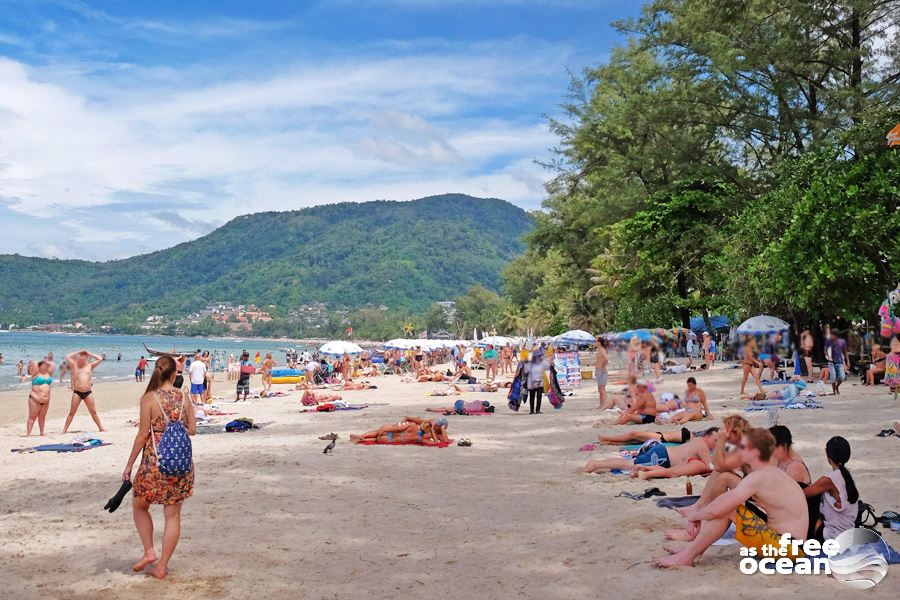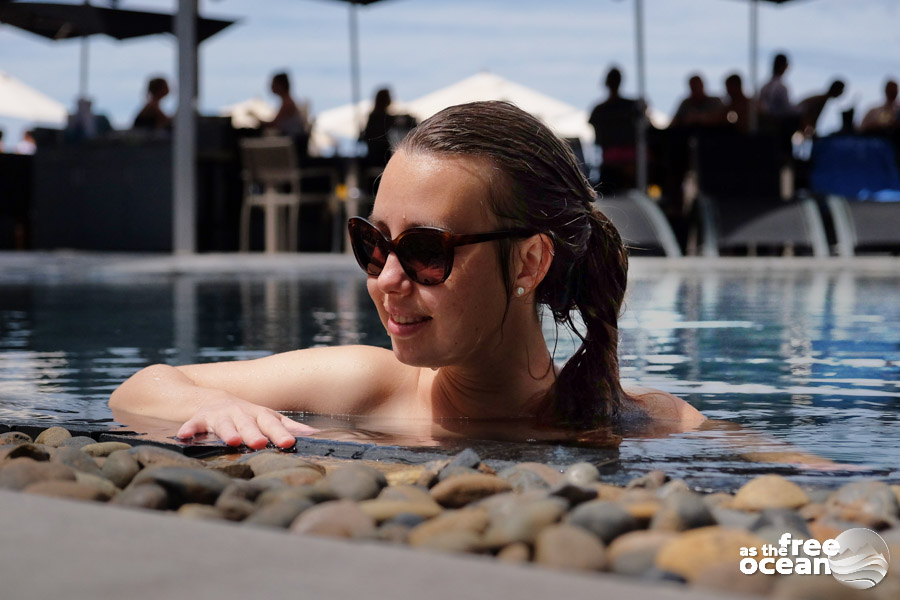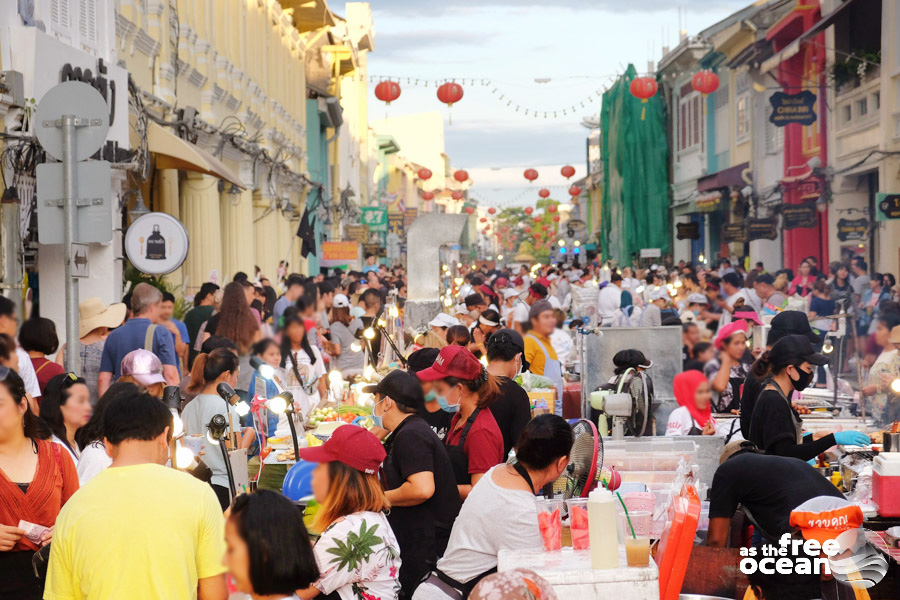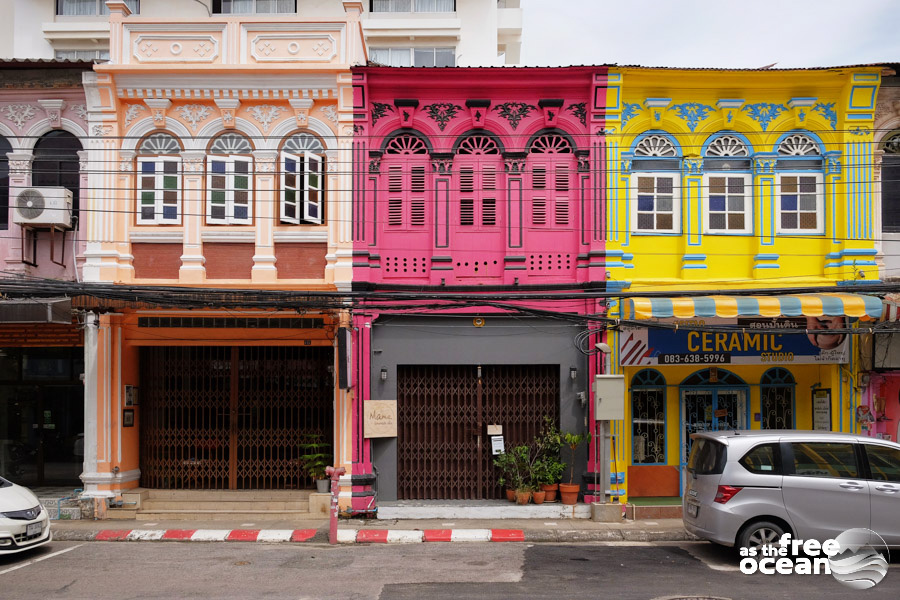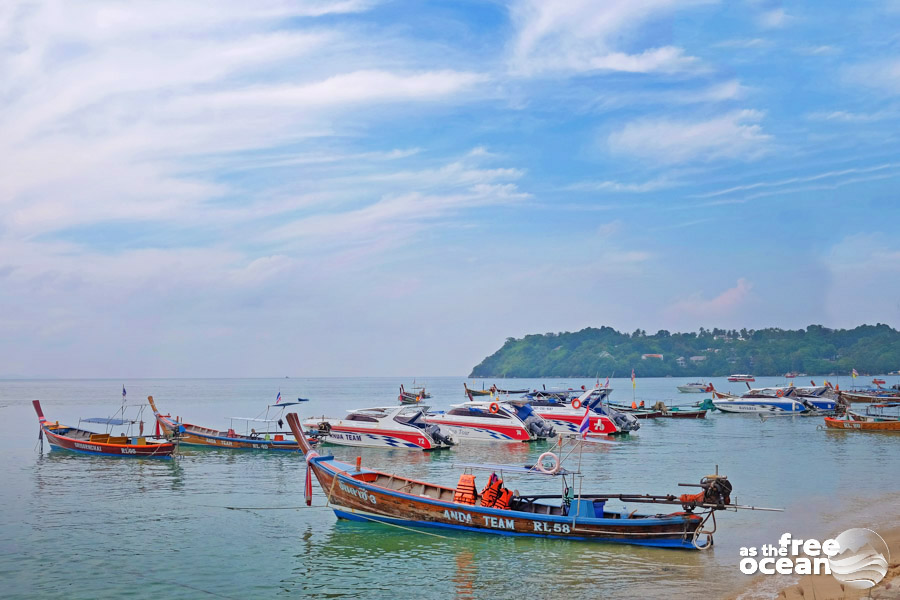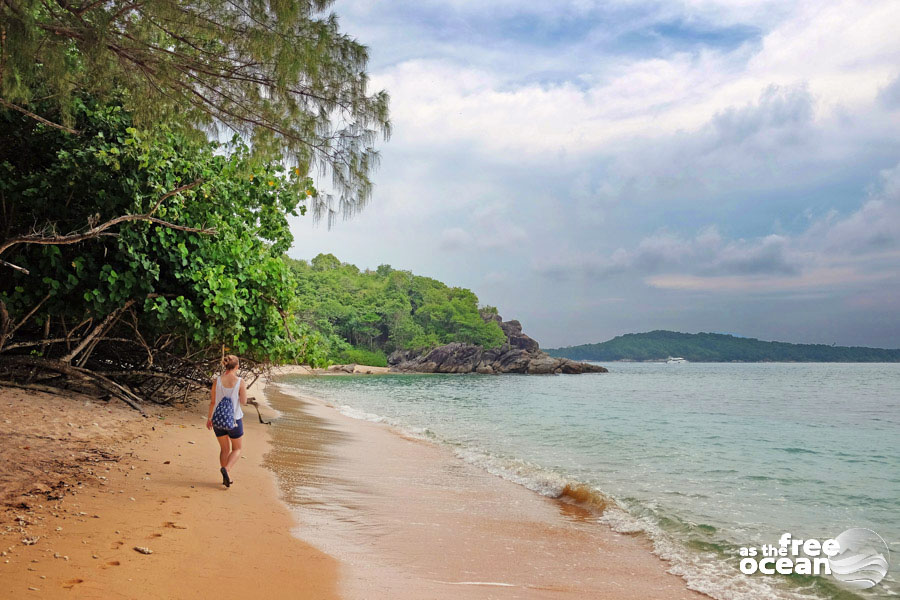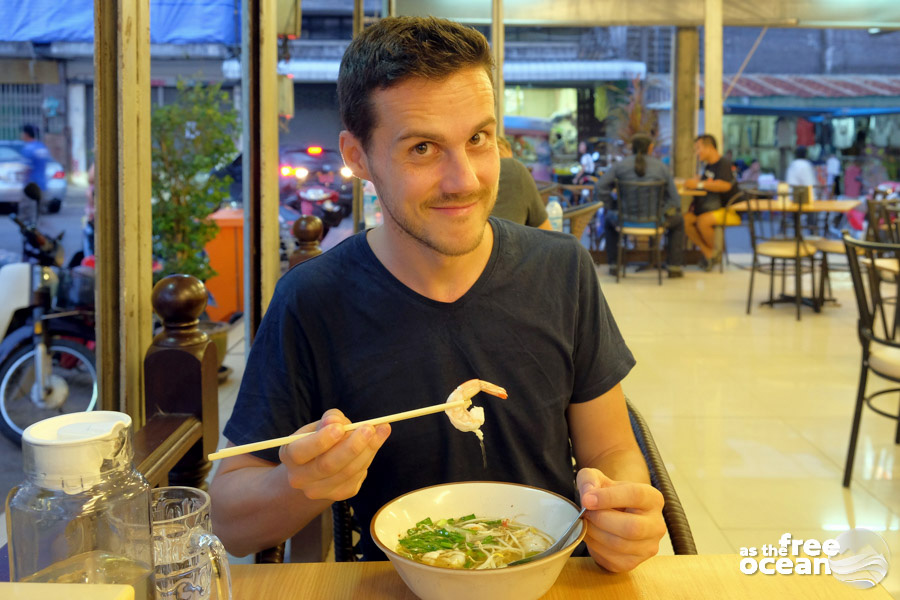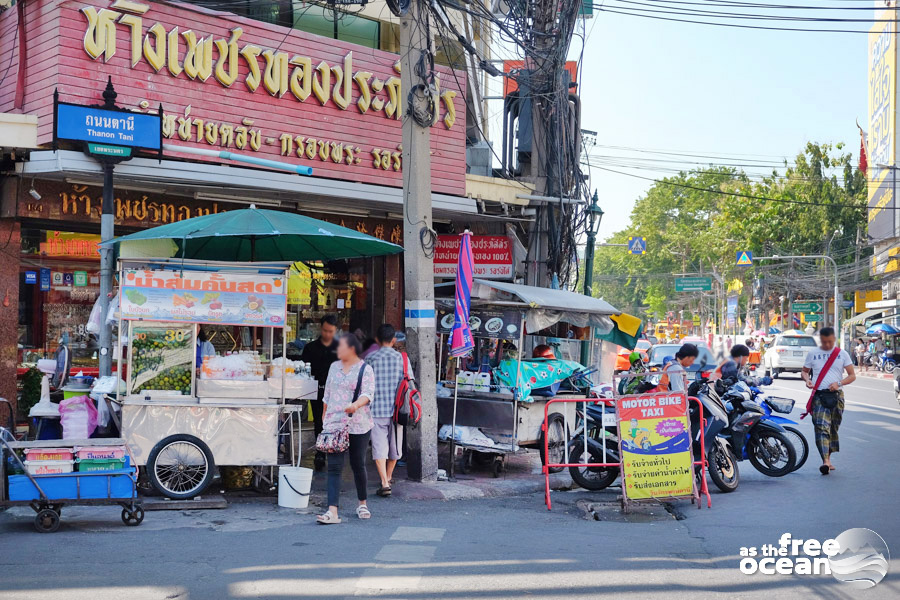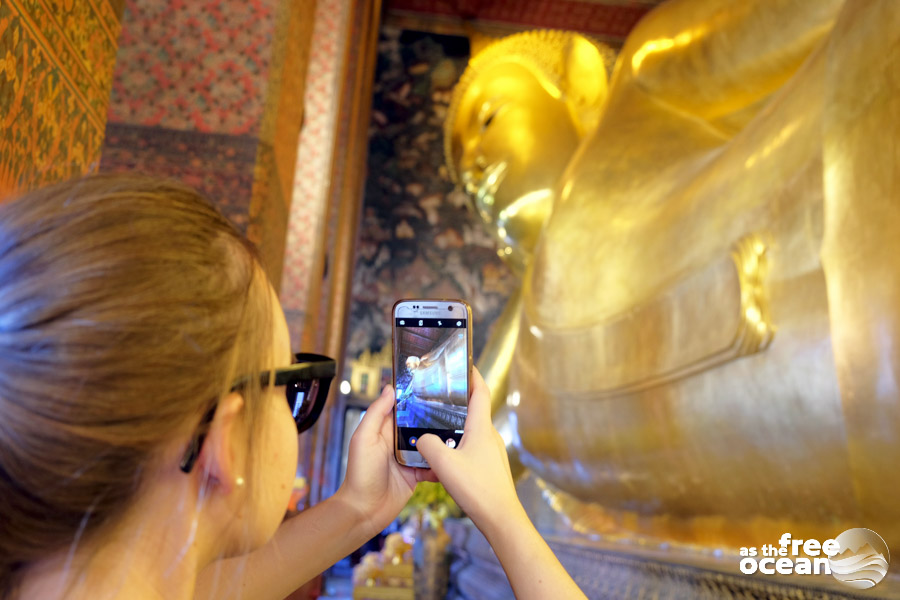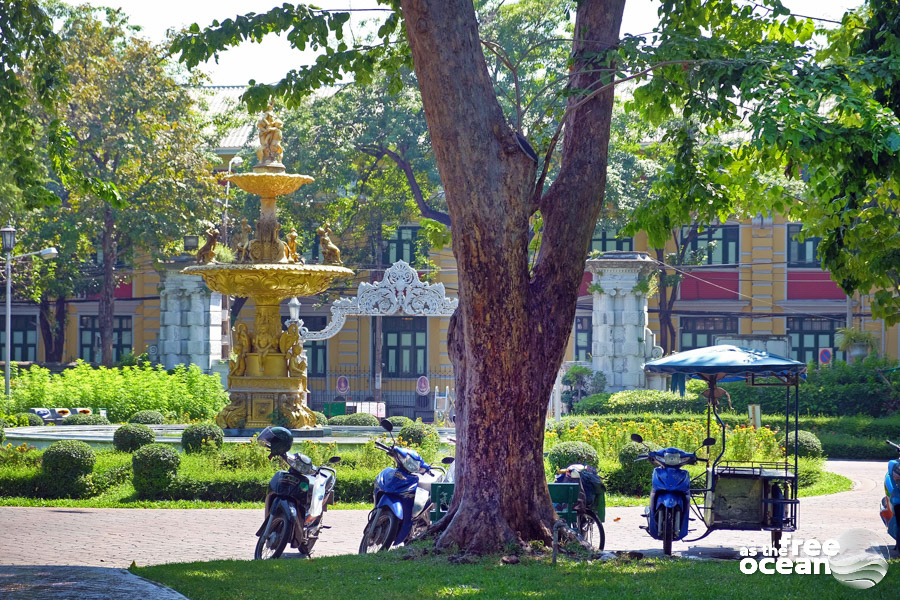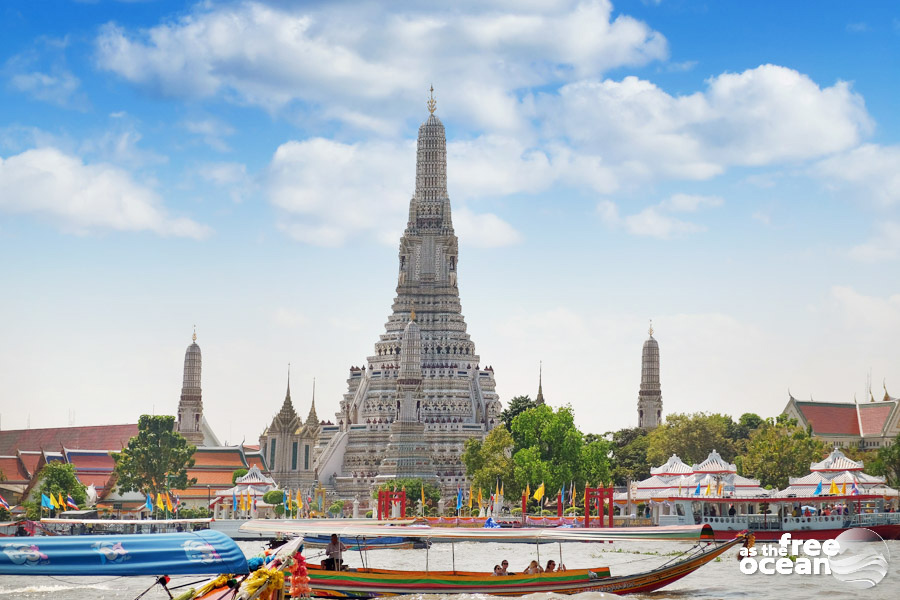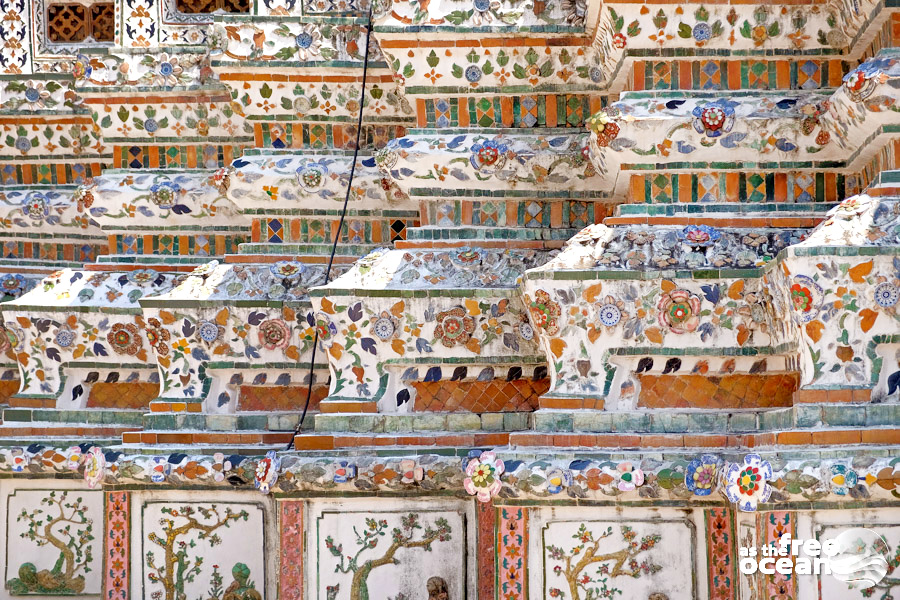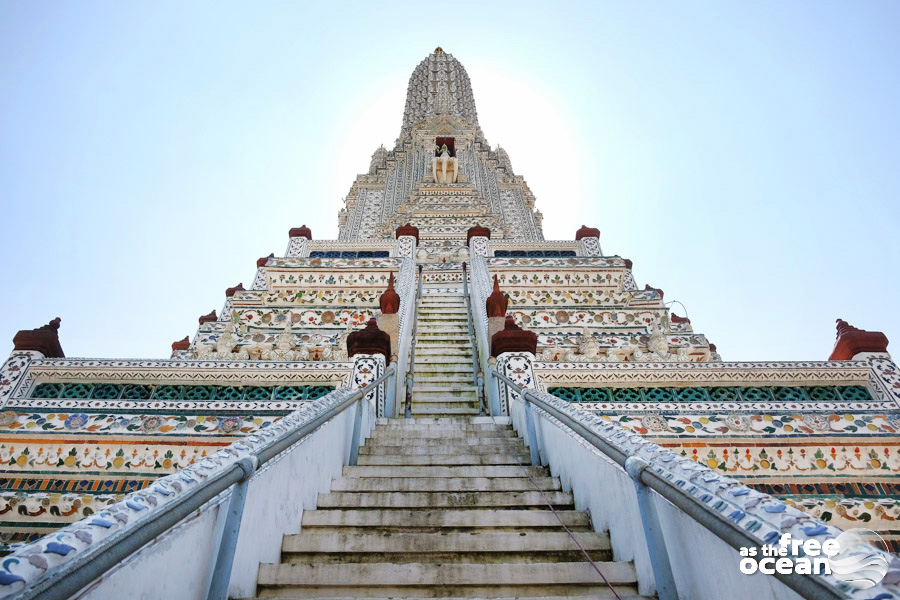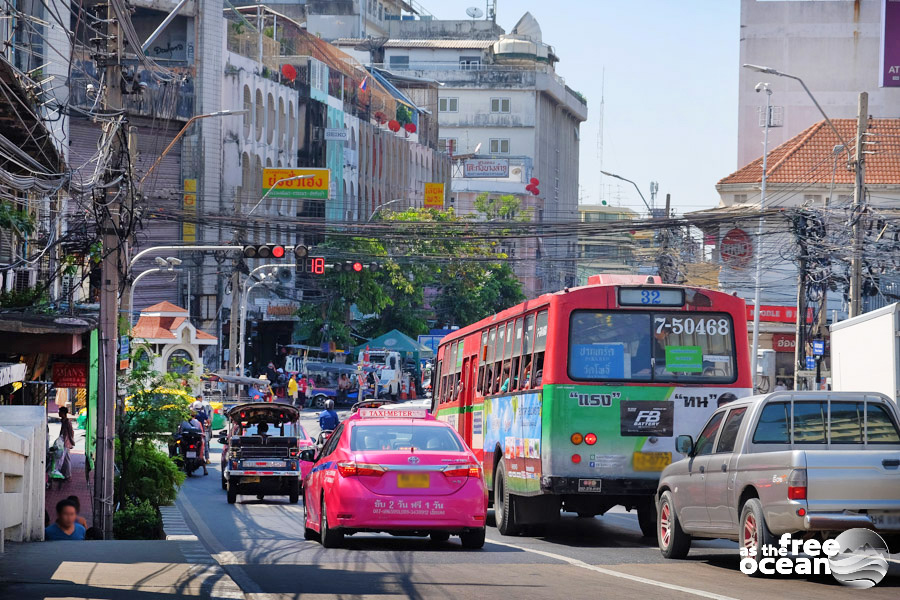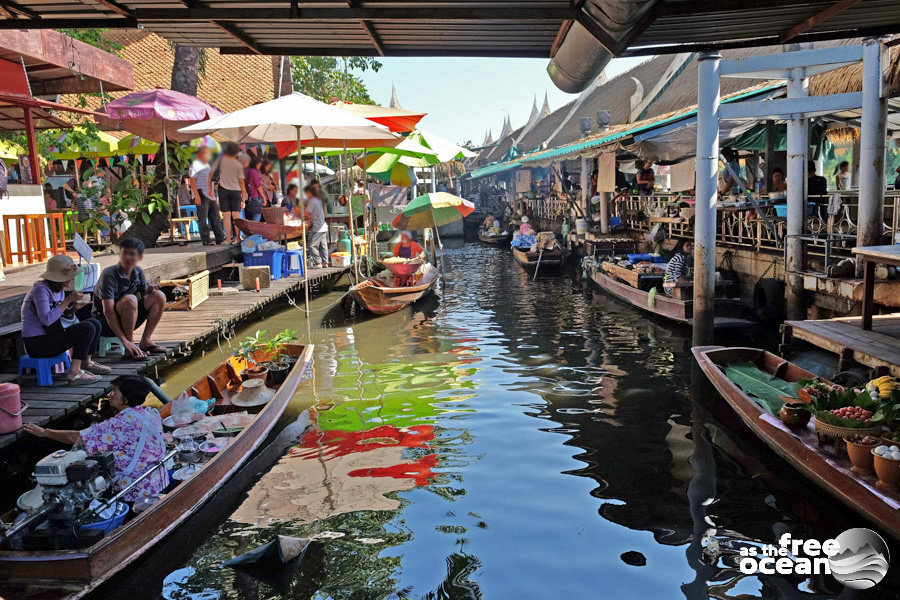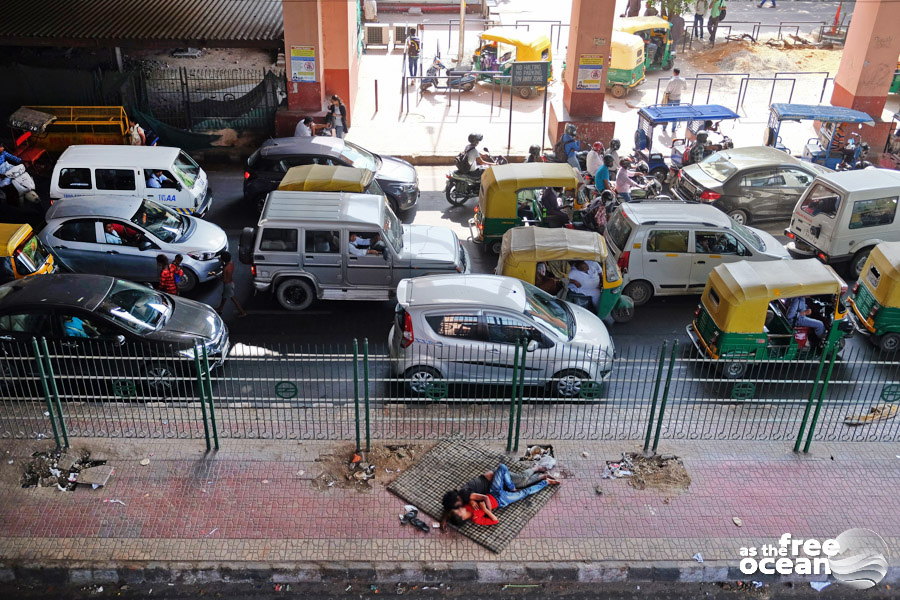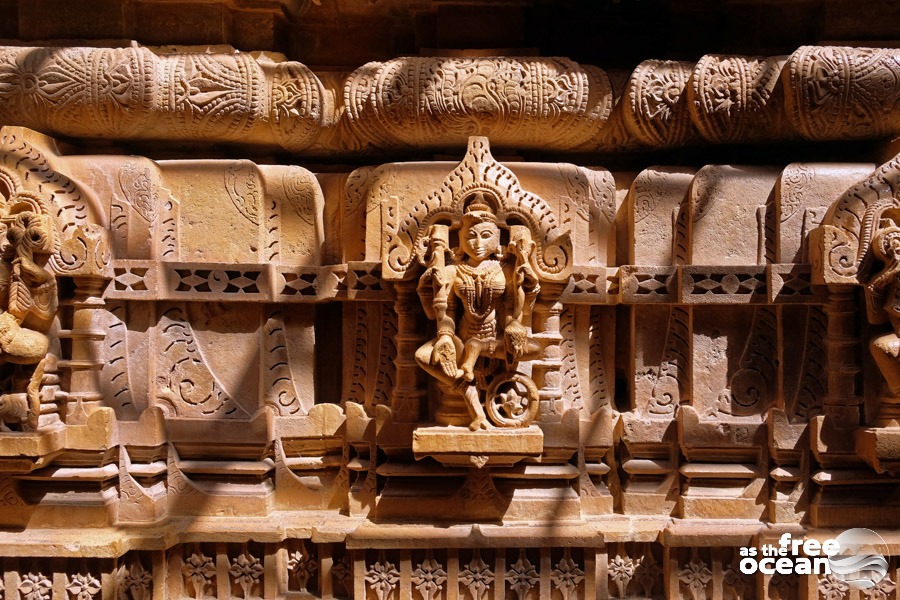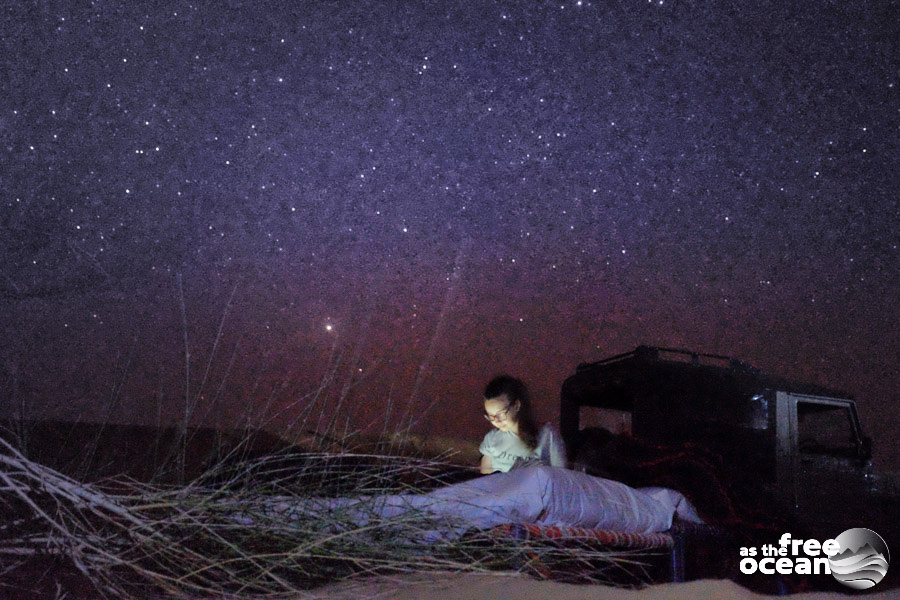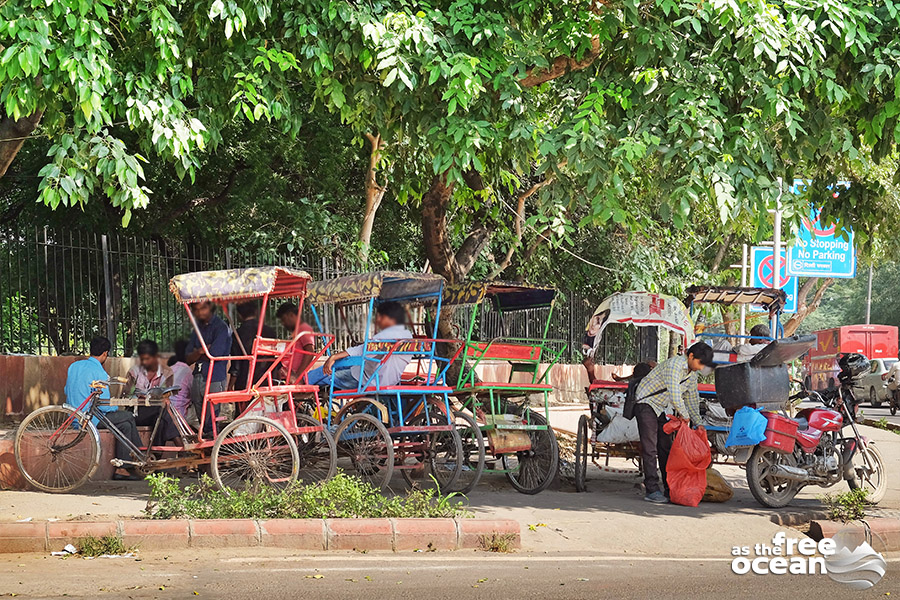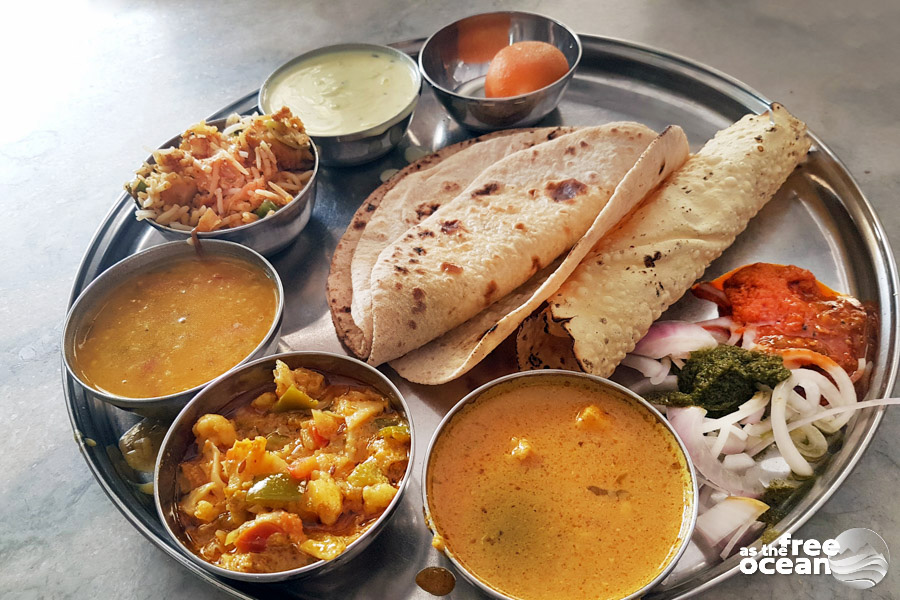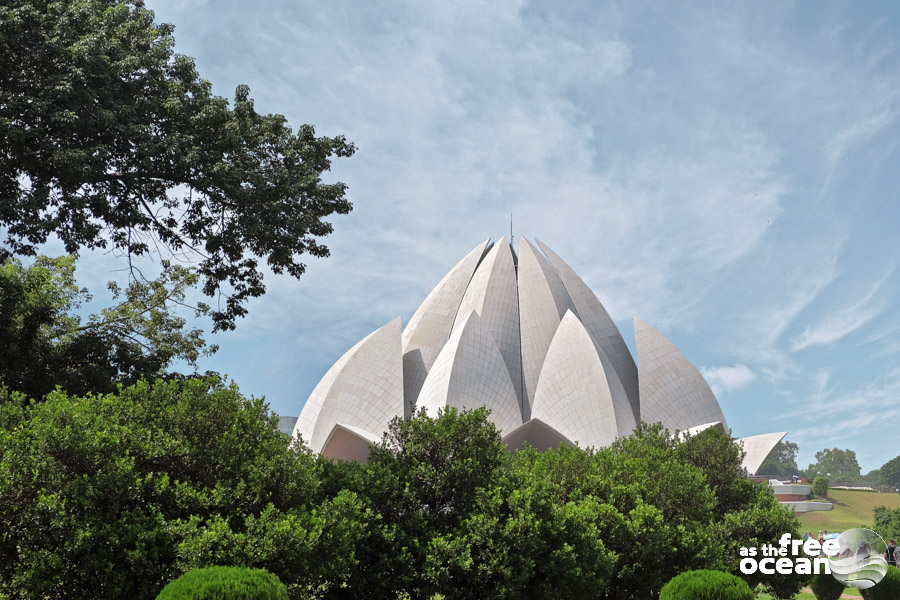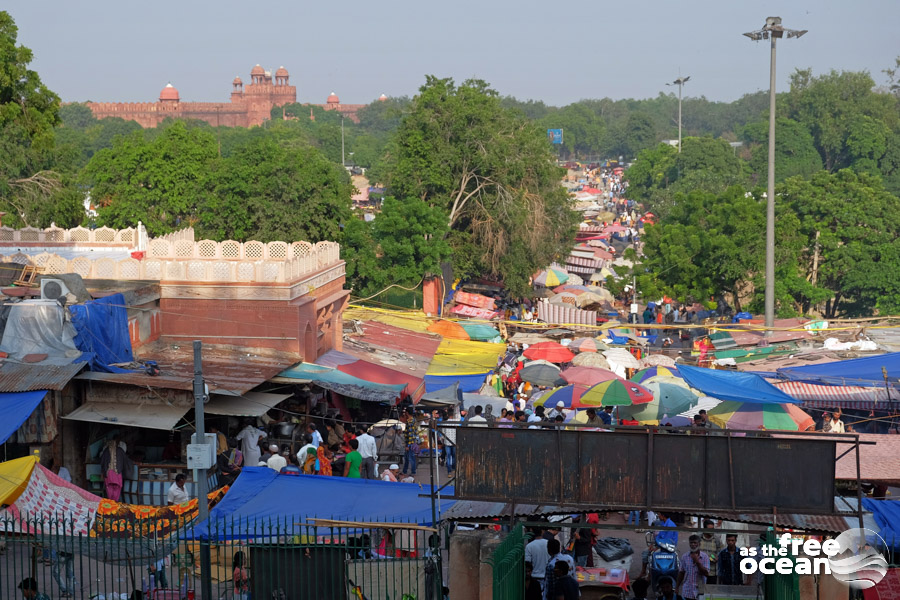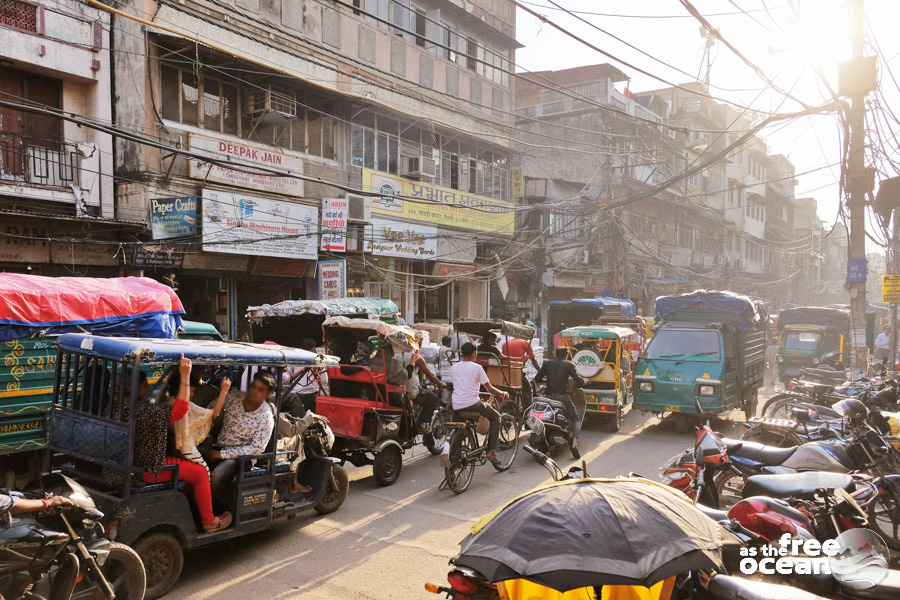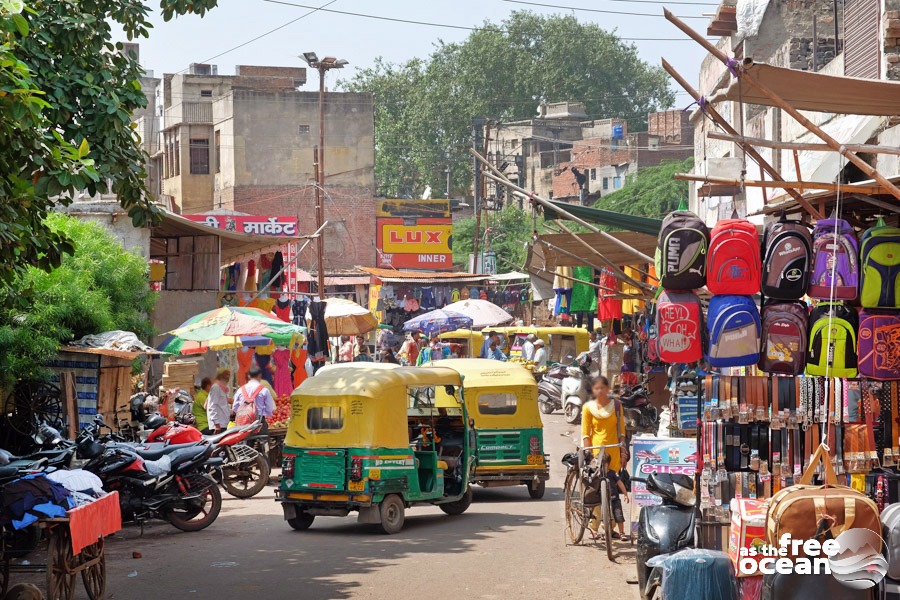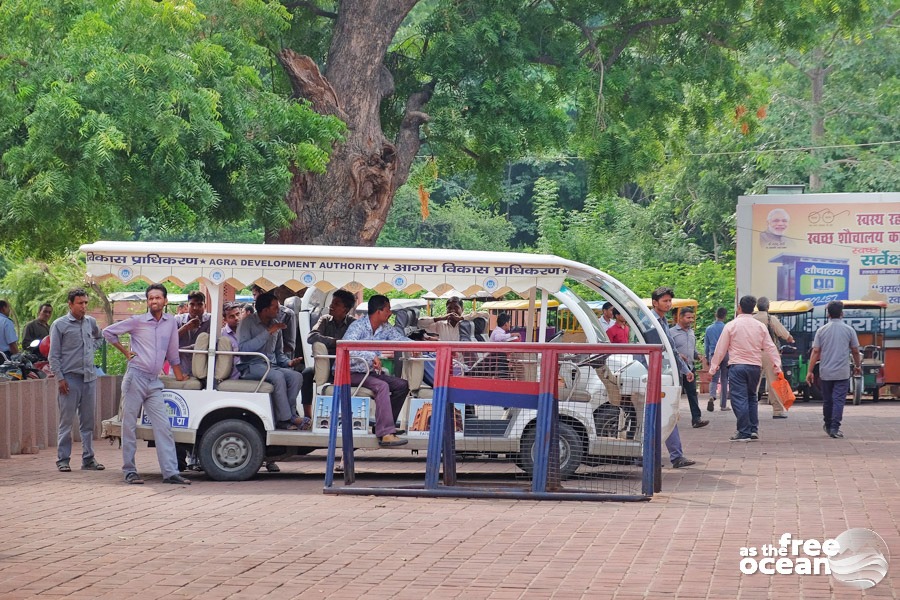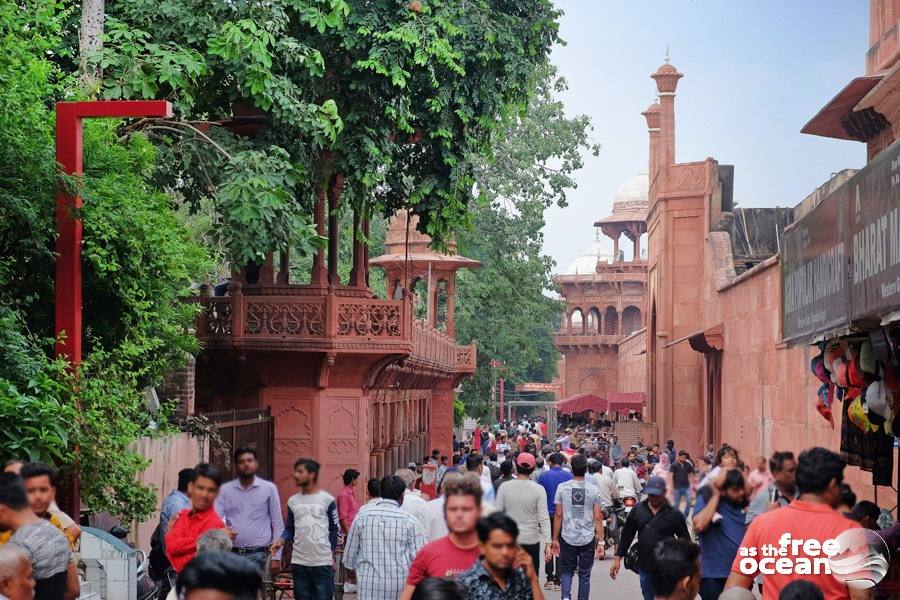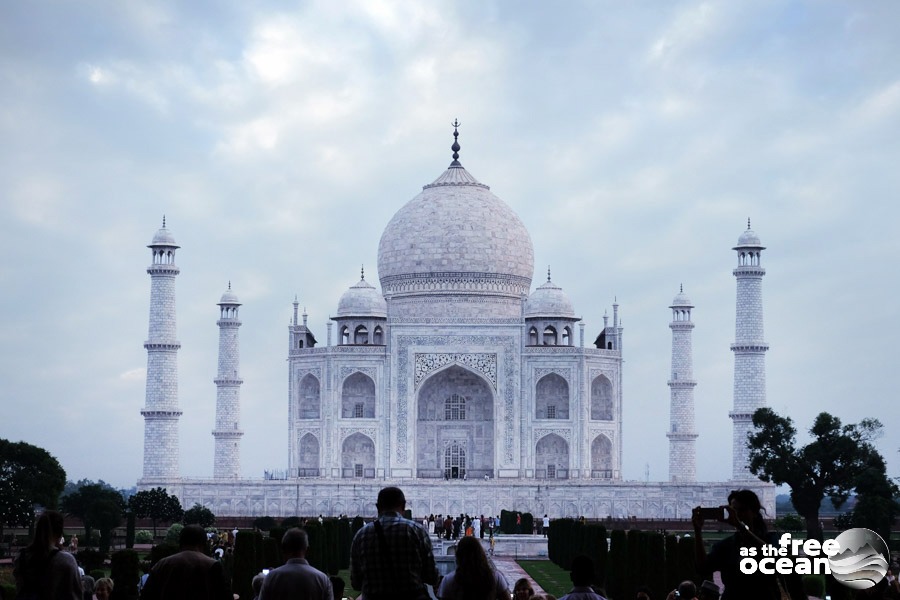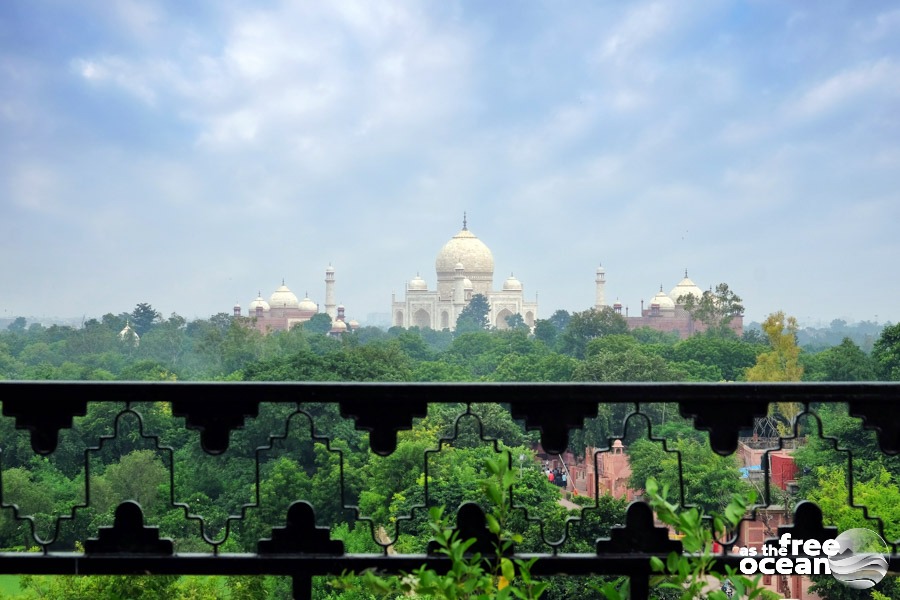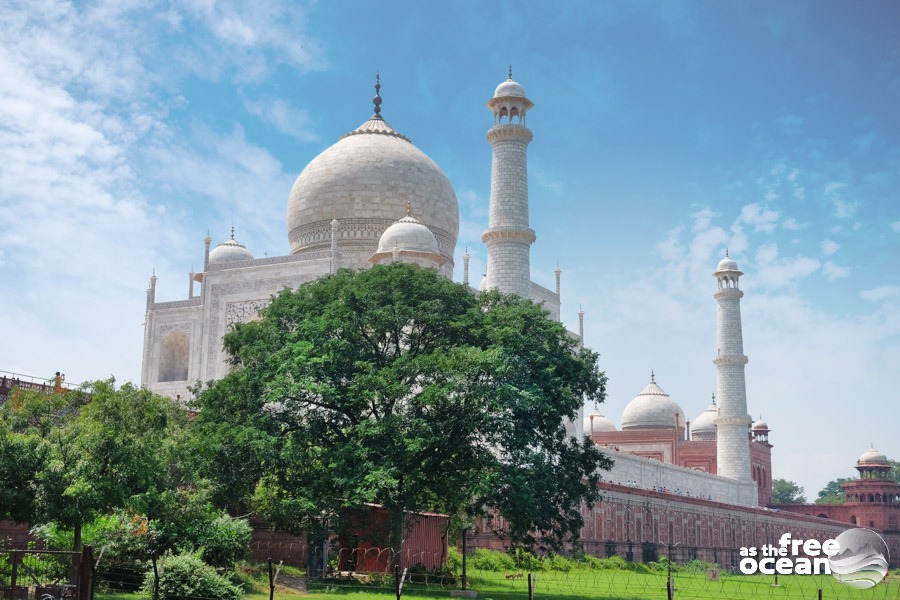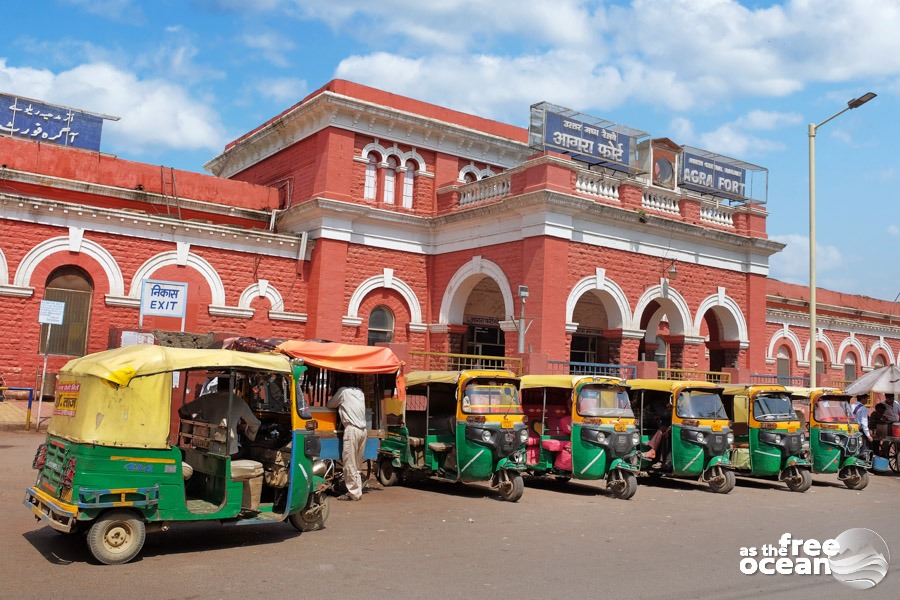We left Thailand and we started a new adventure in the old royal capital of formerly Burma (today Myanmar), Mandalay. Myanmar was for a long time on our list, but as our time in Asia was coming slowly to an end we only reserved two weeks for this country.
Arriving in Mandalay
We arrived in Mandalay on a small airport and went fast through the immigration control as we already applied online for the visa before our arrival. We took a bus towards the city center for 4000 MMK ( around 2€ per person) that dropped us directly at our accommodation, close to the Grand Palace.
We spent our first afternoon together with a lovely Dutch couple who stayed at the same hotel as us and with whom we would meet more often during our trip. We had lunch in a local restaurant and got a first taste of Myanmar cuisine, which we found very similar to other Asian countries, but offered new flavors that made it one of our favorites.
The approaching darkness at the end of the day forced us to rush up the stairs of the amazing temple on Mandalay Hill as we wanted to reach the top for the sunset. We found a beautiful vibe up there and the last traces of daylight covered the valley in a mystic atmosphere.
As we were climbing down the hill we took more time to admire the big Buddha statues. Some of them were standing which we found different from others that we’ve seen before, after visiting many temples where Buddha was represented lying down or in the lotus position.
The town of Mingun and its ancient treasures
The following day we planned to do a lot of sightseeing. We left towards Mingun Jetty, where we boarded a boat that brought us to the other side of the river, in Min Kun, northwest from Mandalay. The boat ride took around 1 hour and cost 5000 MMK for a return ticket. The ticket can be purchased directly in the port. The entrance ticket of Mingun costs the same price and is valid for the whole day and can be used in Mingun and Sagain Hill where visitors can see a lot of other pagodas.
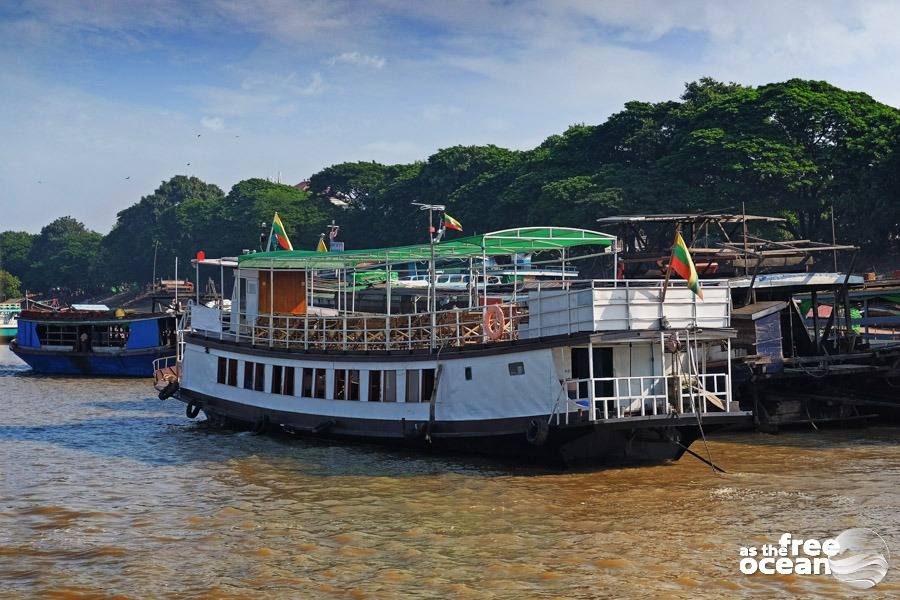
There are many ancient pagodas and temples that can be admired in Mandalay, but Mingun hides some of the most spectacular ones. Mingun Pagoda was our first stop, a structure that was planned to become the biggest Pagoda in the world, but after the initiator of the project, King Bodawpaya died, the construction stopped. A few decades later, a heavy earthquake affected the area and also damaged the Pagoda, causing huge cracks to appear on the face of the huge stupa.
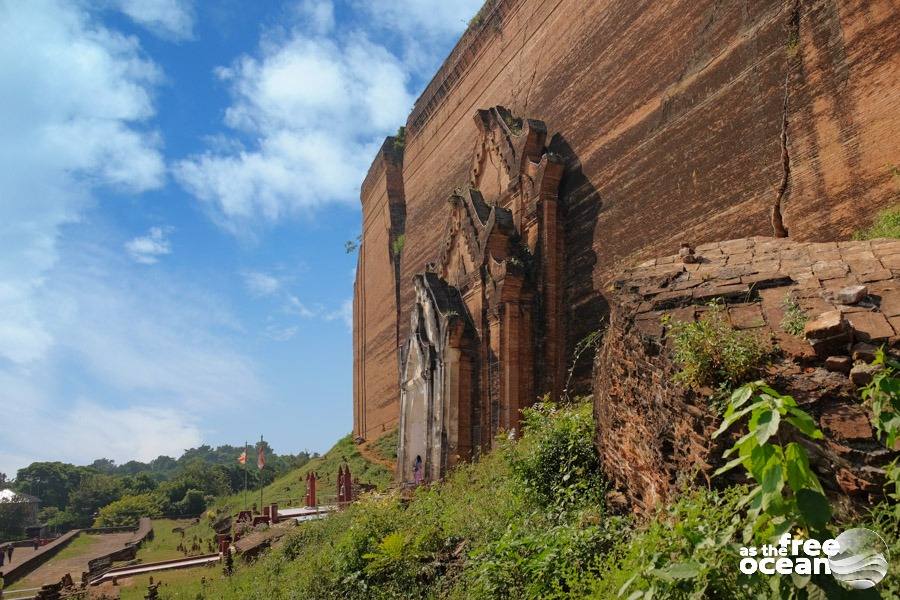
Another ambitious project of the same king was the Mingun Bell, a 90 tons heavy bell that was supposed to be used for the big stupa, being considered nowadays to be the biggest functional one in the world. There is one in Moscow that is bigger but it is damaged.
The beautiful Hsinbyume Pagoda
Another ancient treasure of Mingun is the Hsinbyume Pagoda, a place of worship painted in white that was designed after the physical description of the Buddhist mythological mountain. Visitors are free to roam on the circular terraces of the temple and admire the landscapes from the top, including a view of the Mingun Pagoda.
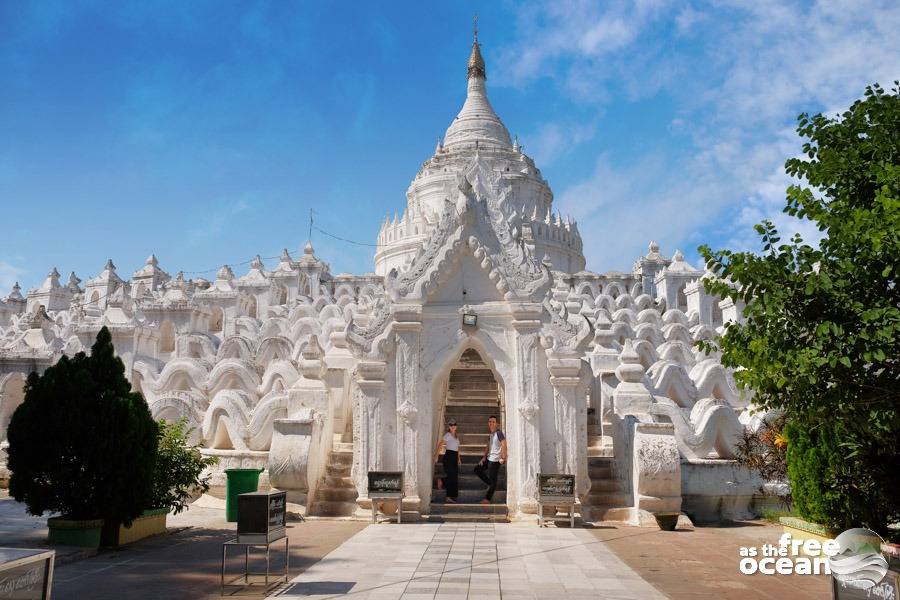
Like many other constructions around the area, the pagoda was affected by the same earthquake that damaged the Mingun Pagoda but was restored later by one of the country’s kings.
Sunset at the Ubein Bridge
After our launch in Mingun, we decided spontaneously not to take the boat back to Mandalay but arranged a transfer with a local driver to take us along the Irrawaddy River, where we visited the Umin Thonze Pagoda.
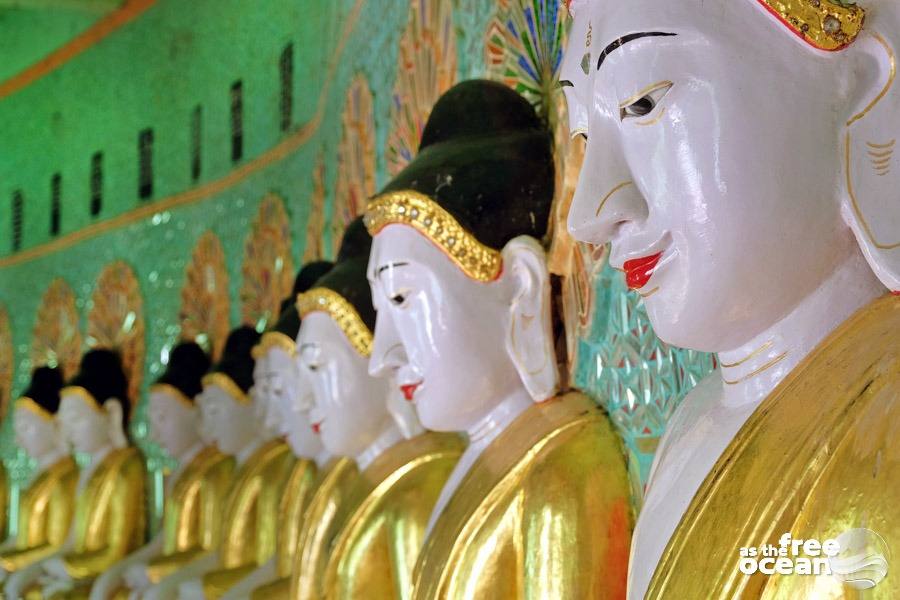
Later we drove till Amarapura, from where we walked on the Ubein Bridge. The bridge is one of the top highlights around Mandalay, a long structure of wood and concrete that allows locals to easily cross over the Taung Tha Man Lake, although it seemed to us that there more tourists crossing the bridge than locals.
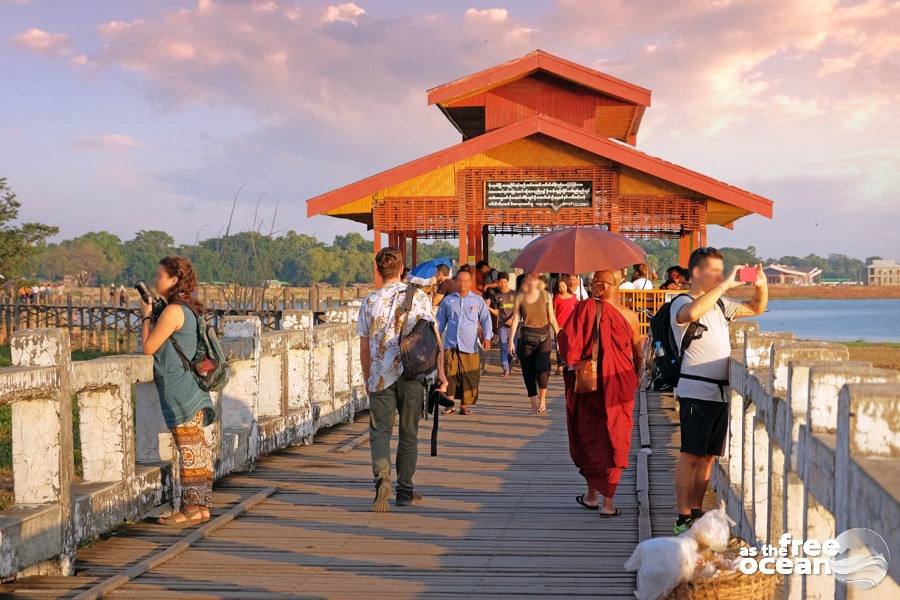
Visitors can opt for a ride on the lake on colorful small boats or to just chill on a terrace with a fresh coconut while admiring the sunset.
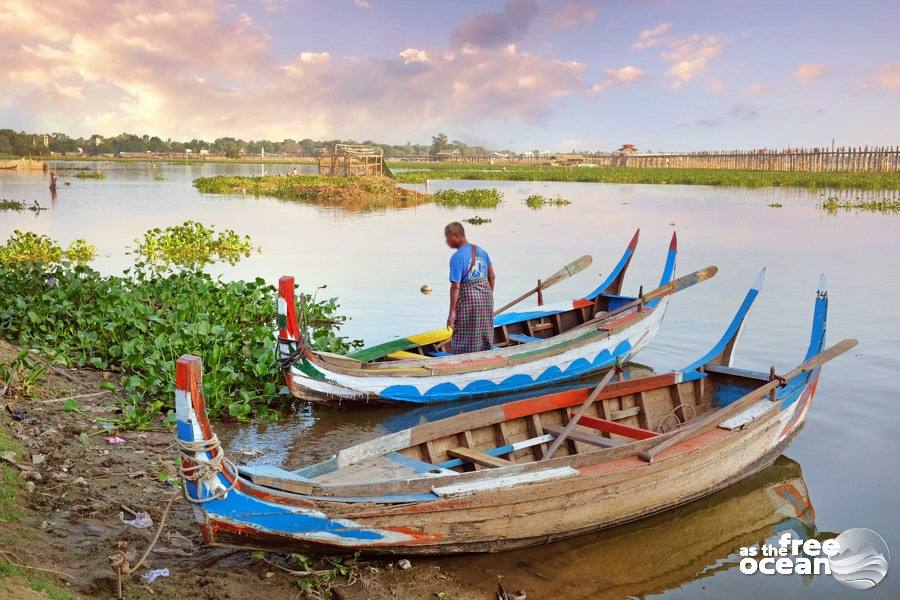
It was already dark when we reached our hotel in Mandalay. We went for a portion of noodles at a nearby family restaurant and ended the day with a beer later on the hotel’s terrace and later fighting the mosquitoes that invaded the room during the day.
The last day we spent exploring the streets of the city and getting ready for our most awaited destination in Myanmar, Bagan. Read more about it here.

